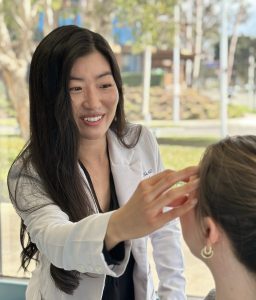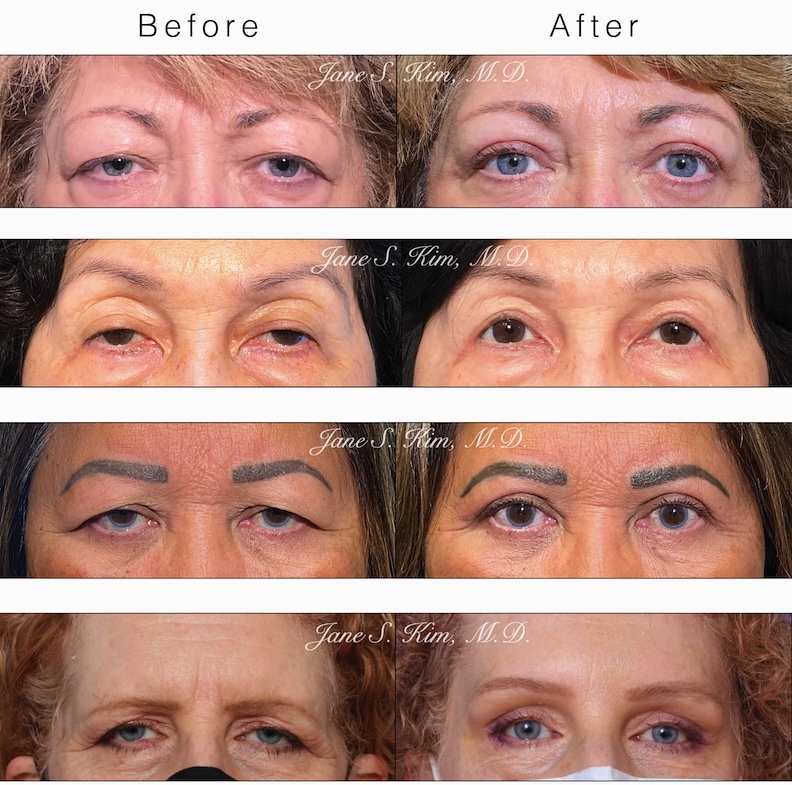It has been said that eyes are the gateway to the soul. They are also the center of the face, and can communicate to others how we think and feel.
As we age, loose skin and dark circles under the eyes can make us look tired and fatigued. Fortunately, these issues can be addressed with safe and relatively painless procedures performed by a trained professional. Let us take this opportunity to introduce you to the newest member of our team!

Jane S. Kim, MD is a board-certified and fellowship-trained oculofacial surgeon who specializes in surgical and non-surgical procedures around the eyes, brows, forehead, and mid-face. She has special interests in cosmetic and reconstructive surgery, revision eyelid surgery, and Asian blepharoplasty.
“The key to looking refreshed and rested is choosing the right option for the right patient, whether that is skin care, injectables, surgery, or some combination thereof.”
Dr. Kim is committed to patient care. Her expertise lies in both functional and cosmetic surgery of the upper and mid-face, with special attention to the region around the eyes. She also specializes in non-surgical facial rejuvenation, including dermal fillers, neurotoxin injections, laser resurfacing, and chemical peels.
DR. KIM SPECIALIZES IN:
- Upper & Lower Eyelid Surgery (Blepharoplasty)
- Revision Eyelid Surgery
- Brow & Forehead Lift
- Asian Blepharoplasty
- Orbital & Periorbital Rehabilitation for Thyroid Eye Disease
- Ptosis Repair
- Skin Cancer/Mohs Reconstruction
- Injectable Treatments (Botox & Fillers)
- Laser Resurfacing
- Chemical Peels

Before and After Images of some patients who have seen Dr. Kim to improve their eyes. If you are interested in meeting with Dr. Kim, please call our office to schedule an appointment.
| Dr. Kim’s CONSULTATION FEE will be waived through March 31, 2025. |
We are pleased to announce that Dr. Madorsky’s article on the interaction between bone and chin implants has been published in Plastic and Reconstructive Surgery Global.
This research provides significant insights into the science of chin augmentation, notably by dispelling the misconception that implants cause bone erosion. The article decodes the complexities of implant-periosteum interaction and offers valuable guidance for improved chin implant procedures.
Background:
Bone resorption has been imputed to silicone chin implants as the cause of the reported bone changes with chin augmentation. Bone remodeling is complex. Both neo-ossification and bone resorption can occur.
Methods:
A literature review was performed on bone complications of silicone chin implants and bone remodeling with periosteal manipulation. Available data from plastic surgical and dental literature, alongside a case observation showing neo-ossification 10 years after implantation, were analyzed and used to explain patterns of bone changes around chin implants.
Results:
Periosteal elevation induces bone formation. Spur-like neo-ossification with silicone chin implants is caused by subperiosteal implant placement. Our case describes such neo-ossification 10 years after silicone chin implantation. The pressure of an implant on bone can cause limited bone resorption. The pressure of an implant trapped under a forming bone shelf can cause significant bone resorption in rare cases.
Conclusions:
Previously reported mandibular bone resorption ascribed to silicone chin implants has been overwrought. Bone formation is more common with silicone chin augmentation. We propose surgical modifications to limit bone complications of chin implants based on the reviewed literature. Surgical approaches to periosteal elevation and implant insertion and consideration of alternate biomaterials to silicone chin implants may improve outcomes of chin augmentation.
